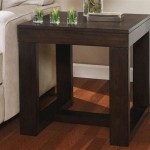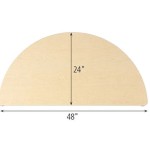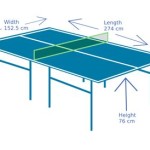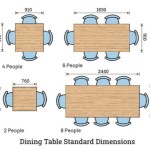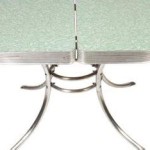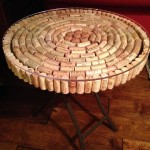The Enduring Appeal of Round Wood and Iron Side Tables
Round wood and iron side tables represent a fusion of natural and industrial aesthetics, providing a versatile furniture solution for a variety of interior design styles. The combination of the organic warmth of wood with the structural strength and often minimalist appearance of iron creates a piece that is both functional and visually appealing. These tables have become increasingly popular due to their ability to complement both modern and traditional decors, offering a touch of rustic charm or industrial edge depending on the specific design and materials used.
The popularity of these side tables stems from several factors, including their adaptability, durability, and aesthetic flexibility. They are often found in living rooms, bedrooms, and even outdoor settings, serving as convenient surfaces for lamps, beverages, books, or decorative items. The round shape contributes to a sense of flow and accessibility within a space, mitigating the sharp angles that can sometimes dominate a room. Furthermore, the inherent contrasting qualities of wood and iron create a visually compelling piece of furniture that can serve as a focal point or a subtle complement to existing décor.
The design possibilities for round wood and iron side tables are practically limitless. The wood component can range from reclaimed lumber with visible knots and imperfections to smoothly finished hardwoods like oak, walnut, or maple. The iron can be wrought into intricate scrollwork for a more traditional look, or configured into sleek, minimalist lines for a contemporary feel. The finish on the iron can also vary widely, from a raw, unfinished look to a powder-coated surface in a range of colors.
Materials and Construction: A Closer Look
The selection of materials and construction techniques significantly impacts the overall quality, longevity, and aesthetic of a round wood and iron side table. Understanding these aspects allows discerning consumers to make informed choices and appreciate the craftsmanship involved in creating these pieces.
Wood: The type of wood used is a primary determinant of the table's appearance and durability. Hardwoods like oak, maple, cherry, and walnut are known for their strength, resistance to wear and tear, and appealing grain patterns. These woods often command a higher price but provide a lasting investment. Softwoods, such as pine and cedar, are more affordable and easier to work with, but they are also more susceptible to scratches and dents. Reclaimed wood, which is often sourced from old buildings or furniture, offers a unique character and a sustainable option. The finish applied to the wood is equally important, affecting its protection and appearance. Options range from natural oils and waxes that enhance the wood's inherent beauty to varnishes and lacquers that provide a durable, protective coating.
Iron: The iron component of the table provides structural support and contributes significantly to its overall aesthetic. Wrought iron, known for its malleability and decorative potential, allows for the creation of intricate designs. Cast iron, on the other hand, is more rigid and often used for creating robust bases and legs. Steel, a stronger and more durable alternative to iron, is commonly used in modern designs. The finish applied to the iron is crucial for preventing rust and corrosion. Powder coating, a process that involves applying a dry powder electrostatically, provides a durable, chip-resistant finish. Other options include painting, waxing, or leaving the iron untreated for a raw, industrial look.
Construction: The method of construction is paramount in ensuring the table's stability and longevity. A well-constructed table will feature secure joinery, such as mortise-and-tenon joints, dovetail joints, or screws and bolts. The method of attaching the wood top to the iron base is also critical. Screws, bolts, or adhesives are commonly used, and the choice depends on the design and materials. The weight capacity of the table should be considered, particularly if it is intended to hold heavy objects.
The craftsmanship involved in creating these tables can range from mass-produced pieces to handcrafted works of art. Handcrafted tables often exhibit greater attention to detail and higher quality materials, resulting in a unique and lasting piece of furniture. The origin of the materials and the ethical practices of the manufacturer are also important considerations for environmentally conscious consumers.
Design Considerations and Styling Options
The design of a round wood and iron side table encompasses a wide array of styles, each capable of enhancing a particular aesthetic. The choice of design should complement the existing décor and reflect the overall ambiance of the space.
Style: Industrial designs typically feature raw, unfinished wood and exposed iron hardware, creating a rugged and utilitarian look. Rustic designs often incorporate reclaimed wood with visible imperfections and distressed iron finishes, evoking a sense of warmth and history. Modern designs tend to be more minimalist, with clean lines, smooth surfaces, and sleek iron frames. Bohemian styles may feature intricately carved wood details and eclectic iron accents, adding a touch of artistry and individuality. Traditional designs often incorporate classic wood finishes and ornate iron scrollwork, creating an elegant and timeless appeal.
Size and Proportion: The size of the side table should be proportional to the surrounding furniture. A table that is too large can overwhelm a small space, while a table that is too small may appear insignificant. The height of the table should also be considered in relation to the height of the seating. Ideally, the table should be at a comfortable height for reaching beverages or placing items without having to strain.
Placement: The placement of the side table can significantly impact its functionality and visual appeal. Placing it next to a sofa or armchair provides a convenient surface for drinks, books, or lamps. Placing it in a hallway or entryway can create a welcoming focal point. Using it as a bedside table provides a convenient surface for lamps, books, or other nighttime essentials. Grouping multiple side tables of varying heights and sizes can create a dynamic and visually interesting arrangement.
Styling: Styling the side table appropriately can enhance its aesthetic appeal. Placing a lamp on the table can add ambient lighting and create a warm and inviting atmosphere. Adding a stack of books or magazines can create a cozy and inviting feel. Placing a decorative object, such as a vase or sculpture, can add a personal touch and enhance the table's visual appeal. Using a tray to corral small items can keep the table organized and clutter-free. Incorporating plants can add a touch of nature and freshness to the space. Ultimately, the styling should reflect personal taste and complement the overall décor of the room.
Maintenance and Care
Proper maintenance and care are essential for preserving the beauty and extending the lifespan of a round wood and iron side table. Different materials require different cleaning methods and protective measures.
Wood Care: Regular dusting with a soft cloth is essential for removing dirt and debris. For wood surfaces with a protective finish, a damp cloth can be used to wipe away spills and stains. Avoid using harsh chemicals or abrasive cleaners, as these can damage the finish. For wood surfaces with a natural oil or wax finish, regular application of the appropriate oil or wax will help to nourish the wood and protect it from moisture. Scratches and minor imperfections can often be touched up with a wood repair kit or a furniture polish. Avoid placing hot items directly on the wood surface, as this can cause damage. Consider using coasters or placemats to protect the wood from heat and moisture.
Iron Care: Regular dusting with a soft cloth is essential for removing dirt and debris from iron surfaces. For iron surfaces with a protective finish, a damp cloth can be used to wipe away spills and stains. Avoid using harsh chemicals or abrasive cleaners, as these can damage the finish. For iron surfaces that are prone to rust, regular application of a rust inhibitor can help to prevent corrosion. Scratches and minor imperfections can often be touched up with a metal paint or a rust converter. Avoid exposing the iron to excessive moisture, as this can accelerate the rusting process.
General Tips: Avoid placing the side table in direct sunlight for extended periods, as this can cause the wood to fade and the iron to overheat. Avoid placing heavy objects on the table that exceed its weight capacity, as this can damage the structure. Regularly inspect the table for loose screws or bolts and tighten them as needed. Consider using felt pads on the bottom of the table legs to protect flooring from scratches. With proper care and maintenance, a round wood and iron side table can provide years of enjoyment and enhance the beauty of any space.
By understanding the materials, design considerations, and maintenance requirements, consumers can make informed decisions and appreciate the enduring appeal of these versatile and stylish pieces of furniture.

Wood And Metal Round End Table Natural Room Essentials Target

Round Coffee Table Reclaimed Wood Metal Base Industrial Modern

Wood And Metal Round End Table Espresso Room Essentials Target

Round Coffee Table Rustic Industrial Side Wood And Metal

A B Home Natural And Black Classic Vintage Wood Metal Round Side Table 44124 The Depot

Walker Edison Contemporary Metal And Wood Round Side Table Coastal Oak Black Bbull8kco Best Buy

Dinelle Rustic Brown Elm Wood Top Iron Leg Round Coffee Table

Round Iron Wooden Side Table Manufacturer Exporter From Jodhpur

East At Main 20 In Whitewash Round Wood And Iron Accent Table St 321513 Ws The Home Depot

Alaterre Furniture 21 Ryegate Natural Brown Live Edge Solid Wood Round End Table Metal And Target

